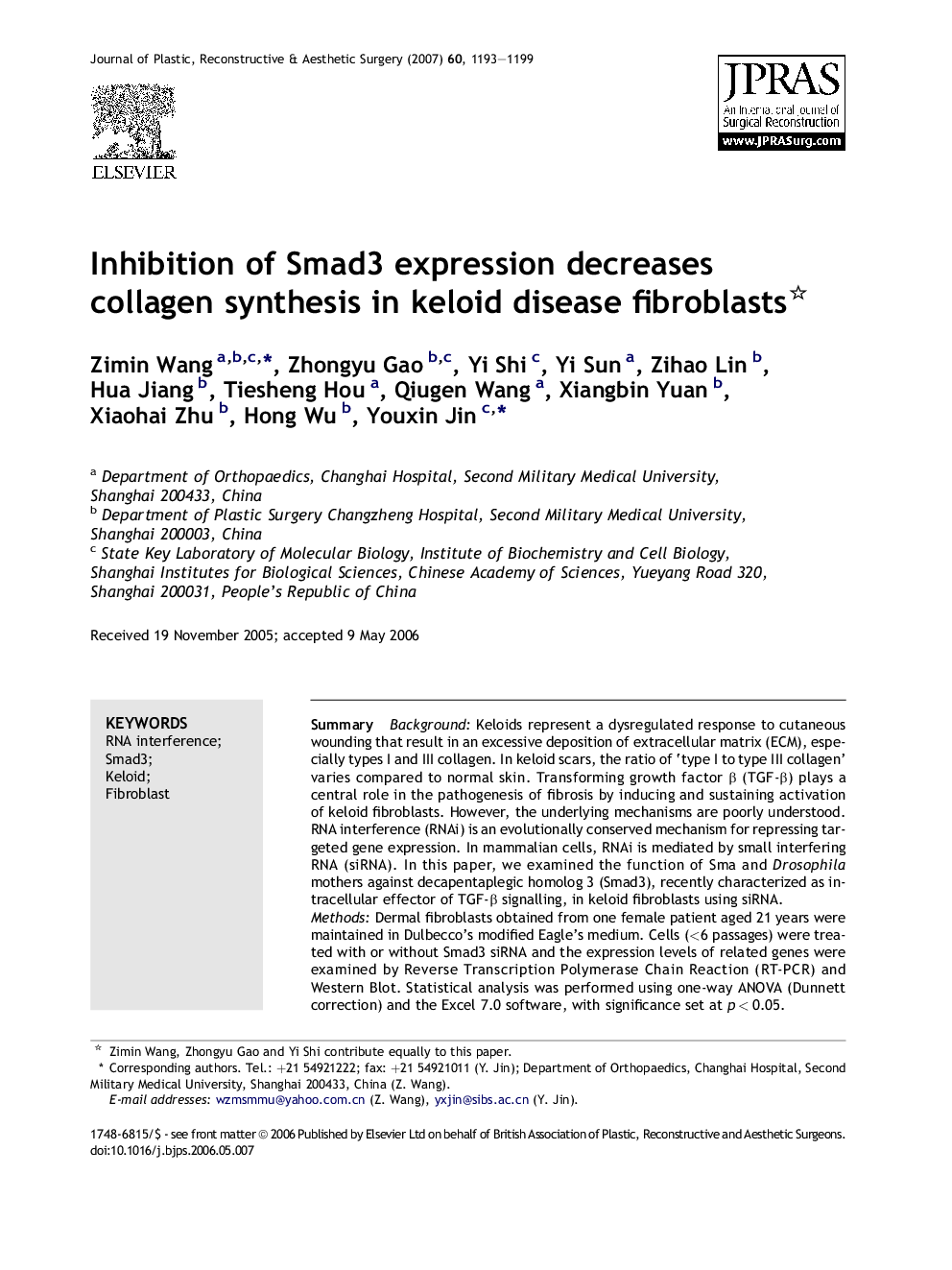| Article ID | Journal | Published Year | Pages | File Type |
|---|---|---|---|---|
| 4121649 | Journal of Plastic, Reconstructive & Aesthetic Surgery | 2007 | 7 Pages |
SummaryBackgroundKeloids represent a dysregulated response to cutaneous wounding that result in an excessive deposition of extracellular matrix (ECM), especially types I and III collagen. In keloid scars, the ratio of ‘type I to type III collagen’ varies compared to normal skin. Transforming growth factor β (TGF-β) plays a central role in the pathogenesis of fibrosis by inducing and sustaining activation of keloid fibroblasts. However, the underlying mechanisms are poorly understood. RNA interference (RNAi) is an evolutionally conserved mechanism for repressing targeted gene expression. In mammalian cells, RNAi is mediated by small interfering RNA (siRNA). In this paper, we examined the function of Sma and Drosophila mothers against decapentaplegic homolog 3 (Smad3), recently characterized as intracellular effector of TGF-β signalling, in keloid fibroblasts using siRNA.MethodsDermal fibroblasts obtained from one female patient aged 21 years were maintained in Dulbecco's modified Eagle's medium. Cells (<6 passages) were treated with or without Smad3 siRNA and the expression levels of related genes were examined by Reverse Transcription Polymerase Chain Reaction (RT-PCR) and Western Blot. Statistical analysis was performed using one-way ANOVA (Dunnett correction) and the Excel 7.0 software, with significance set at p < 0.05.ResultsThe knockdown of Smad3 expression in mRNA and protein levels was confirmed using RT-PCR and Western Blot. Compared to blank, the mRNA levels of types I and III procollagen were also significantly and uniquely decreased following the reduction of Smad3 by siRNA (p < 0.05).The results indicate that Smad3 plays an important role in the TGF-β induced fibrosis in keloid. Downregulation of Smad3 expression in keloid fibroblasts can significantly decrease procollagen gene expression. SiRNA targeting Smad3 was an efficient reagent to reduce ECM deposition and attenuate process of fibrosis. It could be a new promising therapeutic approach to improve skin wound healing and inhibit progression of fibrotic conditions by interrupting the TGF-β signal pathway.
